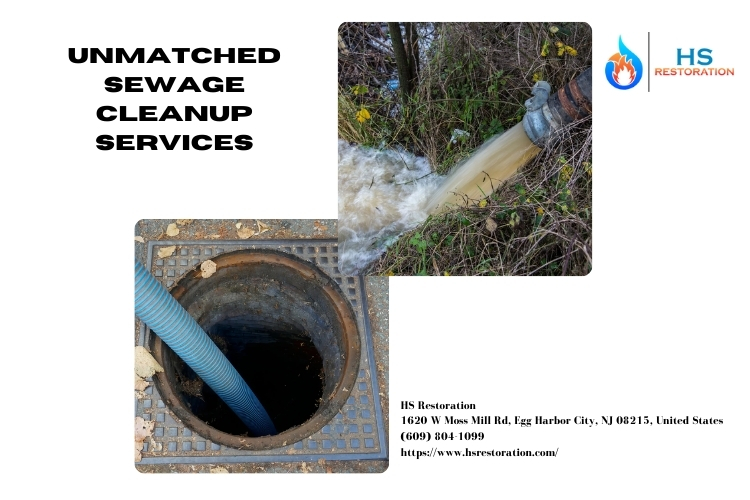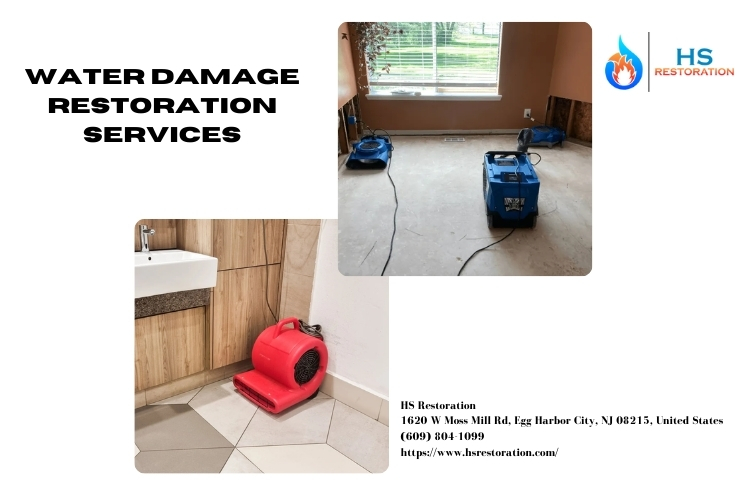Introduction
When it comes to water damage restoration, homeowners often overlook one critical area: the crawlspace. While many focus on the visible damage in their homes, they neglect a hidden space that can be detrimental if left unaddressed. Crawlspace cleaning is not just a maintenance water damage restoration task; it's a vital component of effective water damage restoration. In Egg Harbor City, this often-overlooked space can harbor mold, mildew, and even sewage backups that pose serious health risks.

In this comprehensive guide, we’ll delve deep into the significance of crawlspace cleaning in the context of water damage restoration. We will explore why it matters, how it is done, and what steps homeowners need to take to ensure their properties remain safe and healthy. From understanding the process of sewage cleanup to recognizing the signs that your crawlspace needs attention, this article aims to empower you with knowledge and actionable steps.
Crawlspace Cleaning: The Hidden Key to Effective Water Damage Restoration in Egg Harbor City
What Is Crawlspace Cleaning?
Crawlspace cleaning refers to the thorough inspection and removal of debris, moisture, and contaminants from the underbelly of a home. This area is often neglected because it’s out of sight and out of mind. However, this can lead to severe consequences ranging from structural damage to health hazards.

Why Is It Important?
- Prevents Mold Growth: Moisture accumulation can lead to mold growth, which poses significant health risks. Enhances Indoor Air Quality: Contaminants trapped in the crawlspace can seep into living areas. Protects Structural Integrity: Addressing issues early prevents costly repairs down the road.
The Role of Crawlspaces in Water Damage Restoration
Understanding Water Damage
Water damage can occur due to various factors such as heavy rains, flooding, or plumbing failures. When water infiltrates a home, it doesn’t only affect visible areas; it seeps into hidden spaces like crawlspaces.
Types of Water Damage
Clean Water Damage: Typically caused by broken pipes or rainwater.
Gray Water Damage: Contains contaminants but isn’t necessarily hazardous (e.g., washing machine overflow).
Black Water Damage: Highly contaminated water from sources like sewage backups.
Signs Your Crawlspace Needs Attention
Visible Signs
- Pooling Water: A clear indication that there’s an issue. Mold Growth: Any visible mold should be addressed immediately. Pest Infestation: Rodents or insects often seek shelter in damp areas.
Hidden Signs
- Musty Odor: A consistent stale smell indicates trapped moisture. High Humidity Levels: Monitoring tools can help detect excessive humidity.
The Risks of Neglecting Crawlspace Cleaning
Neglecting your crawlspace may seem harmless at first glance but can have severe consequences:
Health Hazards: Mold spores can trigger allergies or respiratory problems.
Structural Damage: Wood rot and foundation issues arise when moisture is left unchecked.
Decreased Property Value: Potential buyers may shy away from homes with known crawlspace issues.
How Often Should You Clean Your Crawlspace?
Regular maintenance is key to preventing water-related issues:
- At Least Once a Year: An annual inspection ensures any potential problems are identified early. After Major Weather Events: Following heavy rains or storms should prompt immediate checks for water intrusion.
Steps for Effective Crawlspace Cleaning
Preparation for Crawlspace Cleaning
Before diving into cleaning your crawlspace:
Gather necessary tools: gloves, masks, flashlights, dehumidifiers. Ensure proper ventilation in your workspace. Disconnect any electrical sources if necessary for safety.Step-by-Step Guide to Crawlspace Cleaning
Step 1: Inspecting the Area
Begin by inspecting for signs of water damage or mold growth:
- Look for pooling water or damp insulation. Check for pest activity.
Step 2: Remove Debris
Get rid of unwanted items such as leaves, dirt, and old insulation:
Use a trash bag for easy disposal. Wear protective gear while handling contaminated materials.Step 3: Addressing Moisture Issues
If moisture is detected:
Utilize dehumidifiers to reduce humidity levels. Consider installing vapor barriers if necessary.Step 4: Mold Remediation
For noticeable mold presence:
Use specialized anti-fungal solutions. Dispose of any contaminated materials responsibly.Step 5: Final Inspection
Conduct a final walkthrough:
- Ensure all areas are clean and dry. Look for any remaining signs that need further attention.
Professional Help vs DIY Crawlspace Cleaning
When Should You Hire Professionals?
While some homeowners may be comfortable taking on cleaning tasks themselves, certain situations warrant professional intervention:
Extensive Mold Infestation Significant Structural Concerns Sewage Cleanup Requirements
It's crucial not to underestimate the complexities involved in these scenarios—experts are trained specifically for these challenges!
Benefits of Hiring Professional Services
- Expertise in handling hazardous materials Access to advanced cleaning equipment Faster turnaround time compared to DIY efforts
Many companies specialize in both water damage restoration and crawlspace cleaning—this synergy ensures a comprehensive solution!
Common Myths About Crawlspaces and Water Damage Restoration
Myth #1: "Crawlspaces Are Only Used For Storage"
This common belief overlooks their role as potential problem areas regarding air quality and structural integrity—don't let your storage habits compromise your health!
Myth #2: "If I Don’t See Mold or Wetness, There’s No Problem"
Even without visible signs like mold or pooling water lurking beneath your feet could still be causing unseen chaos!
Frequently Asked Questions (FAQs)
1. How do I know if my crawlspace has water damage?
You might notice musty odors or see pooled water during inspections; other signs include high humidity levels near vents inside your home.
2. Can I clean my crawlspace myself?
Yes! However, if you suspect significant contamination (like sewage) or structural issues exist, it's best left to professionals who specialize in those areas!
3. What equipment do I need for DIY crawlspace cleaning?
Basic tools include gloves/masks/flashlights/dehumidifiers plus any specific cleaners needed based on what you find during inspections!
4. Is crawl space encapsulation worth it?
Absolutely! Encapsulation helps keep moisture at bay while improving air quality throughout your home—it’s an investment that pays off long term!
5. How much does professional crawl space cleaning cost?
Pricing varies based on location/size/severity—but expect anything between $500-$3000 depending on conditions present when they arrive onsite!
6. What should I do if I find sewage backup in my crawl space?
Contact professionals immediately—they have specialized training/equipment necessary for safe cleanup/remediation processes involving hazardous material exposure!
Conclusion
In summary, maintaining a clean crawl space is pivotal for effective water damage restoration—not just now but also down the road! By understanding its importance within overall property upkeep strategies—homeowners can take proactive measures against potential hazards lurking beneath their floors! Whether you choose DIY methods or opt for professional services—the key takeaway remains clear: addressing these hidden issues will enhance safety & comfort within living spaces while preserving property value over time!
Contact Us
HS Restoration
Address: 1620 W Moss Mill Rd, Egg Harbor City, NJ 08215, United States
Phone: (609) 804-1099
Website: https://www.hsrestoration.com/